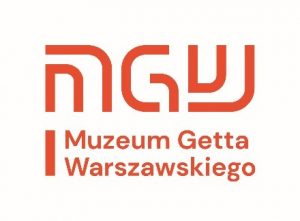 Museum and Memorial Auschwitz-Birkenau
Museum and Memorial Auschwitz-Birkenau
Museum and Memorial Auschwitz-Birkenau is tasked with gathering collections made up of movable property remaining after Kl Auschwitz and documents in connexion with the camp, with securing areas of the former KL Auschwitz and disseminating the history of Kl Auschwitz especially with regard to future generations. The area of the former, Nazi concentration and extermination camp is on the list of UNESCO’s World Heritage Sites. The Museum houses the International Center for Education about Auschwitz and the Holocaust that cooperates with a great many institutions all over the world. The Museum organizes an International Summer Academy for educators and teachers from all over the world.
![]()
The State Museum of Majdanek
The State Museum of Majdanek is the only martyrology museum in the world that was set up already during World War II. It is taking care of the materials remains of three German crime sites – the Majdanek concentration camp and the Belzec and Sobibor extermination camps. The museum focuses on historical education about German occupation in the Lublin region. The museum works out specialized programs of meeting and workshops, it organizes historical workshops for young people, study visits for adults and implements international historical and educational projects as for example the museum’s cooperation with the Friedrich von Bodelschwingh Bethel Schools from Bielefeld.
![]() The Stutthof Museum in Sztutow
The Stutthof Museum in Sztutow
The Stutthof Museum in Sztutow is located on the ground s of the former KL Stutthof concentration camp. Generations of Museum employees have become guardians of the memory and suffering of thousands of victims. The Museum protects and preserves the national heritage by means of its educational, exhibition, scientific and documentation activities. In the framework of the programme Fate of Poles in German concentration camps in the west of Europe the Museum collects documents and other souvenirs in connexion with the tragic fate of our countrymen in German concentration camps in the west of Europe. The Museum also organizes conferences and encounters of Polish and foreign museologists.

POLIN Museum
POLIN Museum of the History of Polish Jews shows many centuries of the history of Polish Jews. The main task of the Museum is to restore and preserve the memory of the history of Polish Jews, to promote the ideas of openness, tolerance and truth thus contributing to mutual understanding and respect among Poles and Jews, European societies and the peoples of the world. The Museum organizes exhibitions and conducts educational programmes. In connexion with its multi-faceted cooperation with foreign institutions, the museum organized a temporary exhibition called Poles risking their lives – Poles saving Jews during the Holocaust which was translated into 10 languages. One of the programmes of the Museum is the Global Education Outreach Program (GEOP) which consists of international scientific workshops, conferences, lectures and seminars.

Warsaw Ghetto Museum
The objective of the Warsaw Ghetto Museum is to present the tragic events that took place during the occupation of Poland by Germany during World War II and to commemorate the memory of those who lived and suffered in the Warsaw ghetto. The Museum came into being in 2018 in the renovated building of the former Bersohn and Bauman’s Children’s Hospital at 60, Sienna St. located within the confines of the former ghetto. The Warsaw
Ghetto was the largest of all the ghettos in German-occupied Europe. In April, 1941, more than 400 000 people were crammed into an area of some 3 km². Thanks to its location the Museum is a hallmark of pre-war Jewish Warsaw next to such preserved monuments as the Nozyki Synagogue, the Jewish Historical Institute and the Jewish Cemetery at Okopowa Street.
